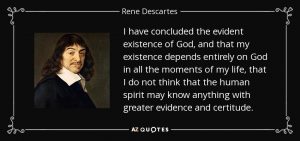

Therefore, there is a need to create a new link and explain why the ideas obtained represent the world accurately. According to the author, this theory has the power to break the connection between the human mind and the world itself.

The thought pattern idea is later introduced as the representational theory, which questions whether the world seen around the person is real. After examining the world perception as unreal and possibly deceiving, Descartes presents the idea of thought patterns connected to conscious experience that the human mind undergoes. Within the exploration of essential ideas of the author’s work, the second meditation becomes the topic under discussion. Therefore, the vital idea explored in the first meditation is that most opinions and thoughts should be doubted until proven exact. The author proves the nature of things being untrue by stating: “When I think this over more carefully, I see so clearly that waking can never be distinguished from sleep by any conclusive indications that I am stupefied” (Descartes 14). Later, the Meditator’s opinions have he obtained from his senses, which can be deceiving, as the things that can be seen in the dreams are as accurate as what is happening in real life. The Mediator, as a character, led through the narration, decides to doubt his views and recognize the ideas that can be proved certainly. Therefore, in the first meditation, the underlying idea is to identify the specific knowledge and call other expertise into doubt. In an exploration of the ideas of Descartes, there is a need to put the most important of them foremost, from the beginning to the end.


 0 kommentar(er)
0 kommentar(er)
